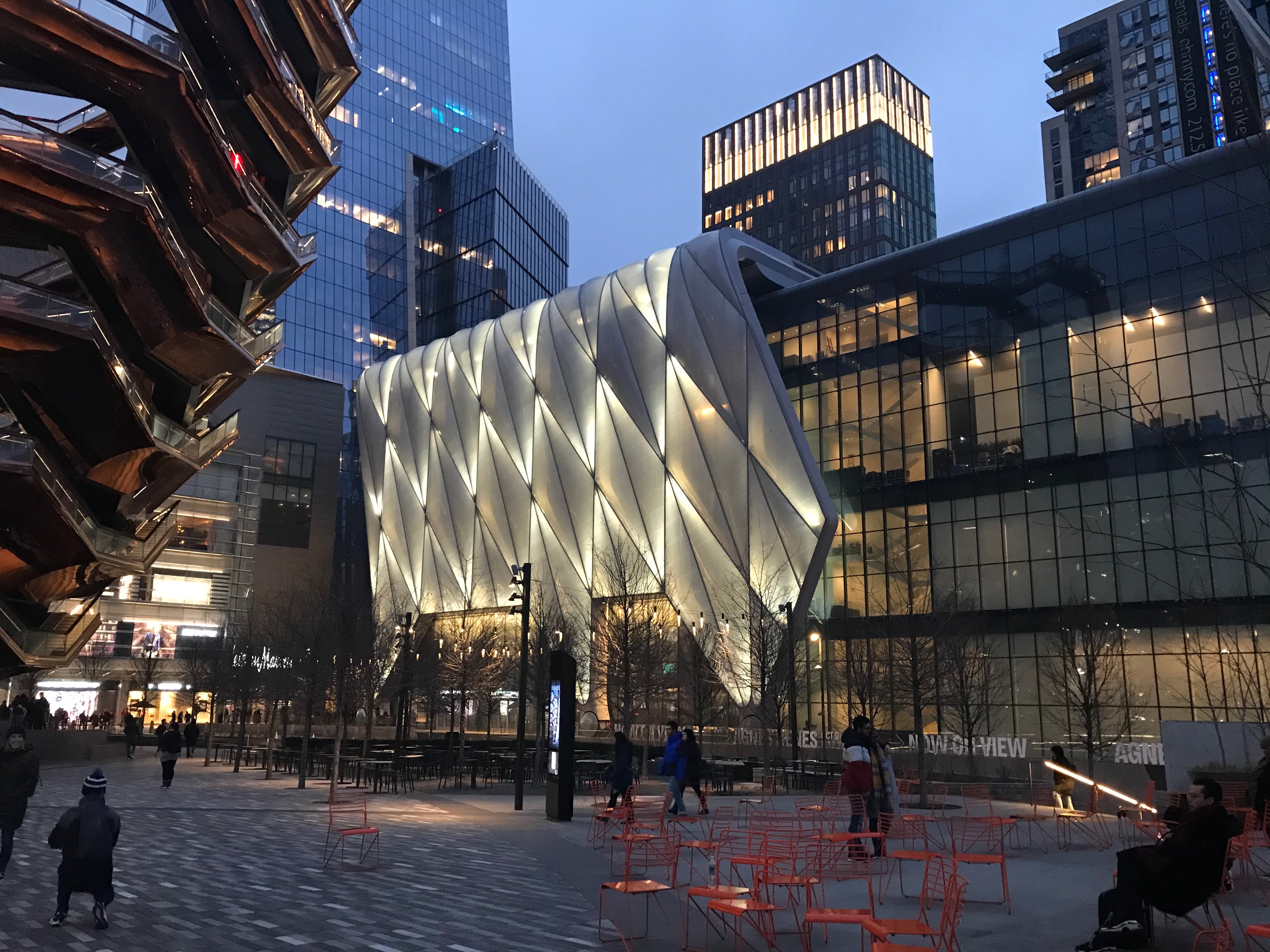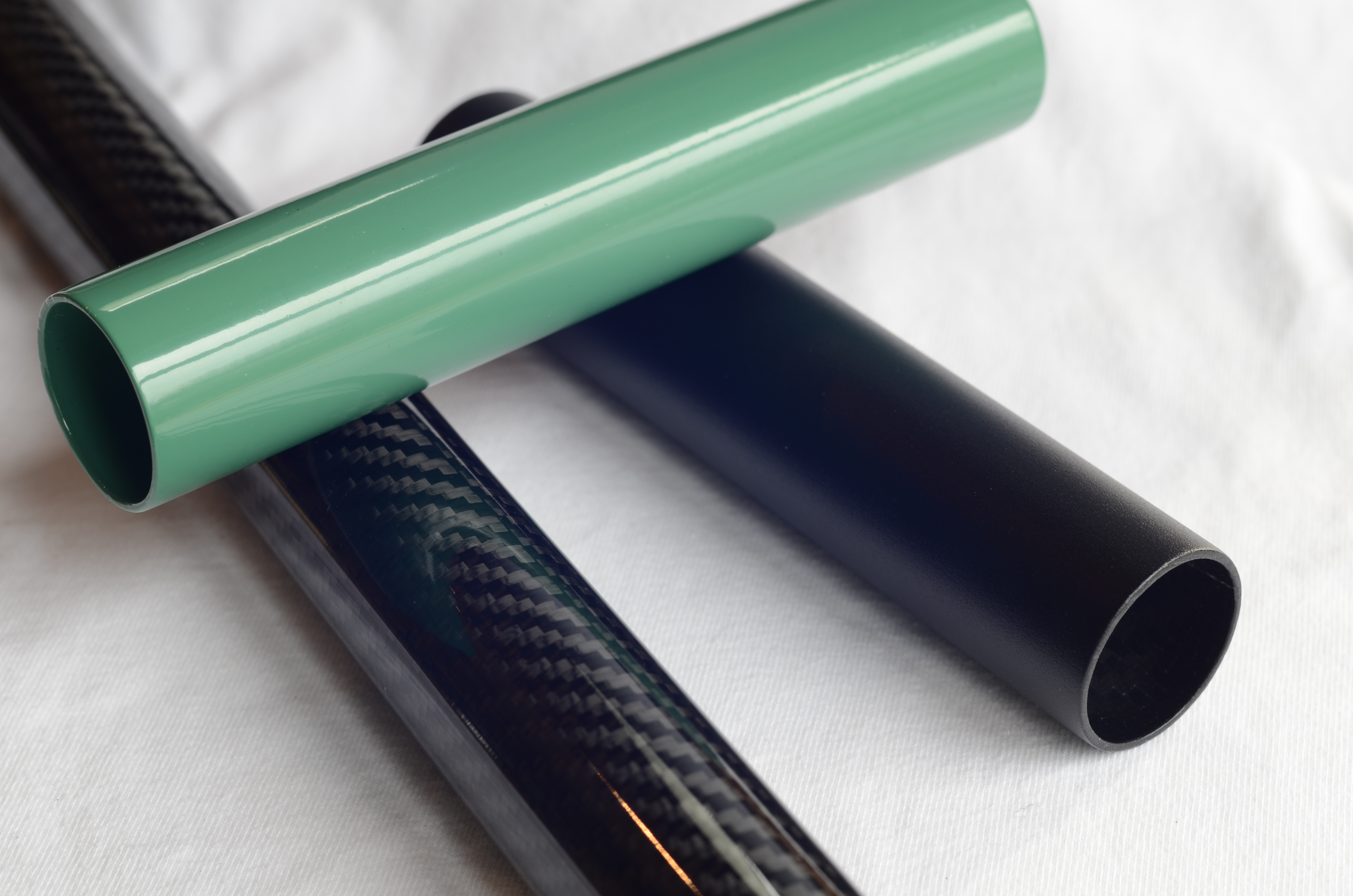|
Rope Lock
In a theater fly system, a rope lock is a device used to prevent a rope, and the line set it controls, from moving. A rope lock is controlled by a steel handle that engages the lock when vertical and releases it when horizontal. The handle is typically red powder coated or covered by a red rubber grip. A steel, oval-shaped safety ring encircles both the rope and the handle to ensure that the lock cannot be accidentally released. Rope locks are mounted to a locking rail, which provides structural support and holds them at a convenient level for the stage crew. Locking mechanism Two metal cams, one stationary and one movable, are used to immobilize the rope. The position of the movable cam is controlled by the locking handle. When the handle is raised, the movable cam is pressed towards the stationary cam so as to grip the rope by compressing it between the cams. Conversely, the lock is released by lowering the handle, thus retracting the movable cam away from the stationary cam ... [...More Info...] [...Related Items...] OR: [Wikipedia] [Google] [Baidu] |
Rope Lock Cams
A rope is a group of yarns, plies, fibres, or strands that are twisted or braided together into a larger and stronger form. Ropes have tensile strength and so can be used for dragging and lifting. Rope is thicker and stronger than similarly constructed cord, string, and twine. Construction Rope may be constructed of any long, stringy, fibrous material, but generally is constructed of certain natural or synthetic fibres. Synthetic fibre ropes are significantly stronger than their natural fibre counterparts, they have a higher tensile strength, they are more resistant to rotting than ropes created from natural fibres, and they can be made to float on water. But synthetic ropes also possess certain disadvantages, including slipperiness, and some can be damaged more easily by UV light. Common natural fibres for rope are Manila hemp, hemp, linen, cotton, coir, jute, straw, and sisal. Synthetic fibres in use for rope-making include polypropylene, nylon, polyesters (e.g. PE ... [...More Info...] [...Related Items...] OR: [Wikipedia] [Google] [Baidu] |
Theater (structure)
A theater, theatre or playhouse, is a structure where theatrical works, performing arts and musical concerts are presented. The theater building serves to define the performance and audience spaces. The facility usually is organized to provide support areas for performers, the technical crew and the audience members, as well as the stage where the performance takes place. There are as many types of theaters as there are types of performance. Theaters may be built specifically for a certain types of productions, they may serve for more general performance needs or they may be adapted or converted for use as a theater. They may range from open-air amphitheaters to ornate, cathedral-like structures to simple, undecorated rooms or black box theaters. A theatre used for opera performances is called an opera house. A theater is not required for performance (as in environmental theater or street theater), this article is about structures used specifically for performance. Some t ... [...More Info...] [...Related Items...] OR: [Wikipedia] [Google] [Baidu] |
Fly System
A fly system, or theatrical rigging system, is a system of rope lines, blocks ( pulleys), counterweights and related devices within a theater that enables a stage crew to fly (hoist) quickly, quietly and safely components such as curtains, lights, scenery, stage effects and, sometimes, people. Systems are typically designed to fly components between clear view of the audience and out of view, into the large opening, known as the fly loft, above the stage. Fly systems are often used in conjunction with other theatre systems, such as scenery wagons, stage lifts and stage turntables, to physically manipulate the mise en scène. Theatrical rigging is most prevalent in proscenium theatres with stage houses designed specifically to handle the significant dead and live loads associated with fly systems. Building, occupational safety, and fire codes limit the types and quantity of rigging permitted in a theatre based on stage configuration. Theatrical rigging standards are de ... [...More Info...] [...Related Items...] OR: [Wikipedia] [Google] [Baidu] |
Powder Coating
Powder coating is a type of coating that is applied as a free-flowing, dry powder. Unlike conventional liquid paint which is delivered via an evaporating solvent, powder coating is typically applied electrostatically and then cured under heat or with ultraviolet light. The powder may be a thermoplastic or a thermoset polymer. It is usually used to create a hard finish that is tougher than conventional paint. Powder coating is mainly used for coating of metals, such as household appliances, aluminium extrusions, drum hardware, automobiles, and bicycle frames. Advancements in powder coating technology like UV curable powder coatings allow for other materials such as plastics, composites, carbon fiber, and MDF (medium-density fibreboard) to be powder coated due to the minimum heat and oven dwell time required to process these components. History and general uses The powder coating process was invented around 1945 by Daniel Gustin and received US Patent 2538562 in 1945. This proc ... [...More Info...] [...Related Items...] OR: [Wikipedia] [Google] [Baidu] |
Stage Crew
A stagehand is a person who works backstage or behind the scenes in theatres, film, television, or location performance. Their work include setting up the scenery, lights, sound, props, rigging, and special effects for a production. General Stagehands are usually skilled in multiple disciplines, including rigging, carpentry, painting, stage electrics, stage lighting, audio, video/projection, and props. Stagehands are often responsible for operating the systems during shows or taping and also for the repair and maintenance of the equipment. Most stagehands have a general knowledge of all the phases of a production, but tend to develop specialties and focus on specific areas. Riggers are in charge of the things that hang. This may include building structures that are tens of stories high. They use safety gear similar to that used for mountain climbing. Carpenters construct and set up scenery. They may also move scenery on stage during a show. Electricians, or more commonly kn ... [...More Info...] [...Related Items...] OR: [Wikipedia] [Google] [Baidu] |
Padlock
Padlocks are portable locks with a shackle that may be passed through an opening (such as a chain link, or hasp staple) to prevent use, theft, vandalism or harm. Naming and etymology The term '' padlock'' is from the late fifteenth century. The prefix pad- is of unknown origin; it is combined with the noun lock, from Old English ''loc'', related to German ''loch'', "hole". History There are padlocks dating to the Roman Era, 500 BC – 300 AD. They were known in early times by merchants traveling the ancient trade routes to Asia, including China. Padlocks have been used in Europe since the middle La Tène period, subsequently spreading to the Roman world and the Przeworsk and Chernyakhov cultures.Katarzyna Czarnecka, "Padlocks In The Przeworsk And The Chernyakhov Cultures In The Late Roman Period, As An Evidence Of Mutual Contacts." Roman padlocks had a long bent rod attached to the case, and a shorter piece which could be inserted into the case. Przeworsk and Chernya ... [...More Info...] [...Related Items...] OR: [Wikipedia] [Google] [Baidu] |




